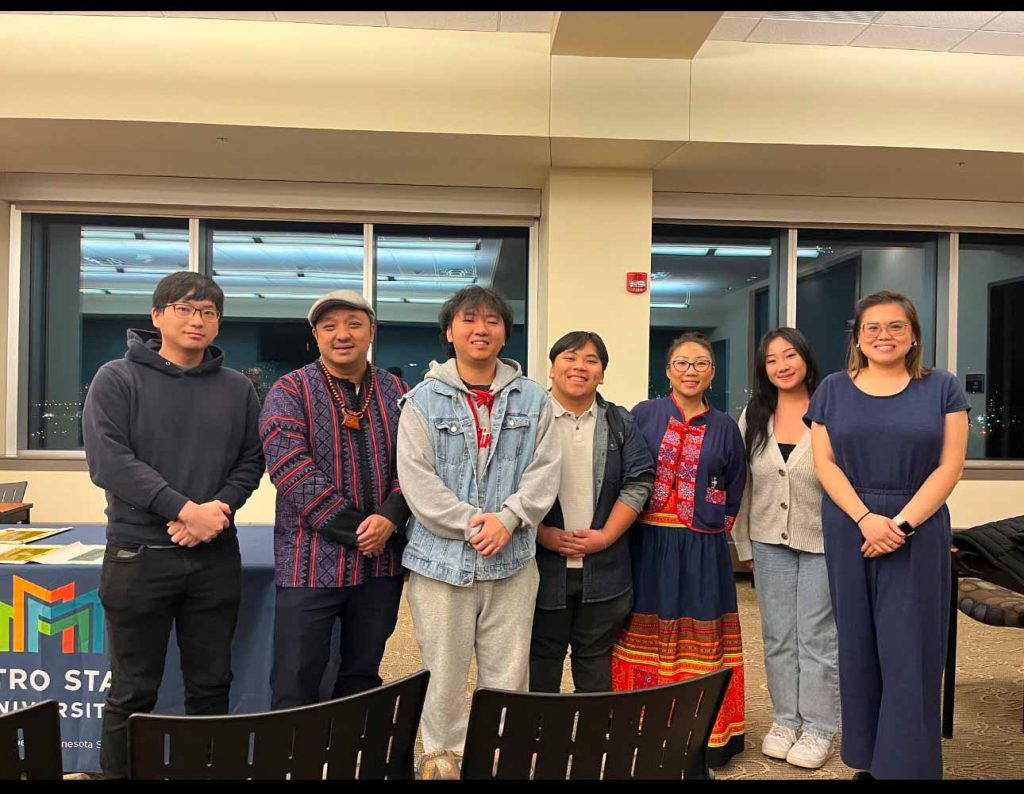Hmong Shamanism Event Review
By: Ryan Wolfe on January 2025

Back on November 12th of 2024 in the Library and Learning center on campus, three different Hmong shamans came in and did a panel for students and the public to check out. Hmong food was provided for spectators, and some tools for Hmong shaman rituals were displayed too. It was the informational session I was hoping to catch and learn from. There’s a lot of information about shamanistic principles and practices, but I’ll try to cover some of the main pieces that the guest speakers discussed.
The three shamans included Billy Lor, Kong Kay Shawn, and Thong Lee. All of them have their own unique background, but some common denominators were among them as they spoke about their histories. One of the commonalities the three shared was that each of them got sick at one point in their lives, and some sort of spiritual calling was coming to them. The tough choice was whether or not they would listen to this calling or turn their back away from that deep sensation.
They all discussed how they were drawn to shamanism after their experiences of being sick. Eventually, through their trials and tribulations, each of them would have to take a shaman test to get a grasp of their abilities. For Billy Lor, he did it as a young boy, and he’s been doing it now for 14 years. Kong Kay Shawn saw spirits at a young age as well, but she tried ignoring these signs for years. She got sick over and over again when she got married and had children. Kong realized the shamanistic role was important for the stability of her marriage, and her father was a shaman at one time too. She would get married a second time, and the tug to become a shaman was still pulling at her. Kong decided to do the test, and she saw what she had been ignoring this whole time, and she fully embraced the shaman role. Thong Lee sees himself more as a shaman consultant and scholar. He tries to heal broken relationships within a family, ones who are seeking help due to depression, financial troubles, and broken marriages. His job is to articulate how spirits can help and how he can mend their troubles through shamanistic rituals and practices.
Shamanism can be related to other spiritual and religious practices too. Kong Kay Shawn was already half Christian and half a shaman, and Billy Lor had some Christian connections too. Lor explained shamans don’t only have to believe in one religion or one god, and that they’re polytheistic because they believe in many gods. They don’t preach to one specific god in their rituals, but they’re open to different perspectives and possibilities.
They also perform rituals on their own or with people they are helping with their practices. There are old and new methods to perform such rituals. They may do some hymns in Hmong, or possibly in the old Chinese Hmong dialect. Kong Kay Shawn mentioned that her kids help with the rituals and the setup of gongs, drums, veils, and joss sticks (which is incense). Billy Lor added on that the role of rituals has changed over time to accommodate the family-home systems and capitalism as well as colonization. The practice differs from what generation of shamans you are speaking to.
Overall, Hmong Shamanism has been important to Hmong people from all walks of life and their practices have helped their community tremendously over the years. No matter what their religion or spiritual practices are, the Shaman’s work is quite beneficial and can heal many different people. Each of the speakers had their own paths and callings to being a Shaman, and some tried to turn away, the call of the Shaman provided them a greater purpose. In the heart, a little bit of help can shed a spotlight on the essential need of spiritual mystics in our lives, in one way or another.
